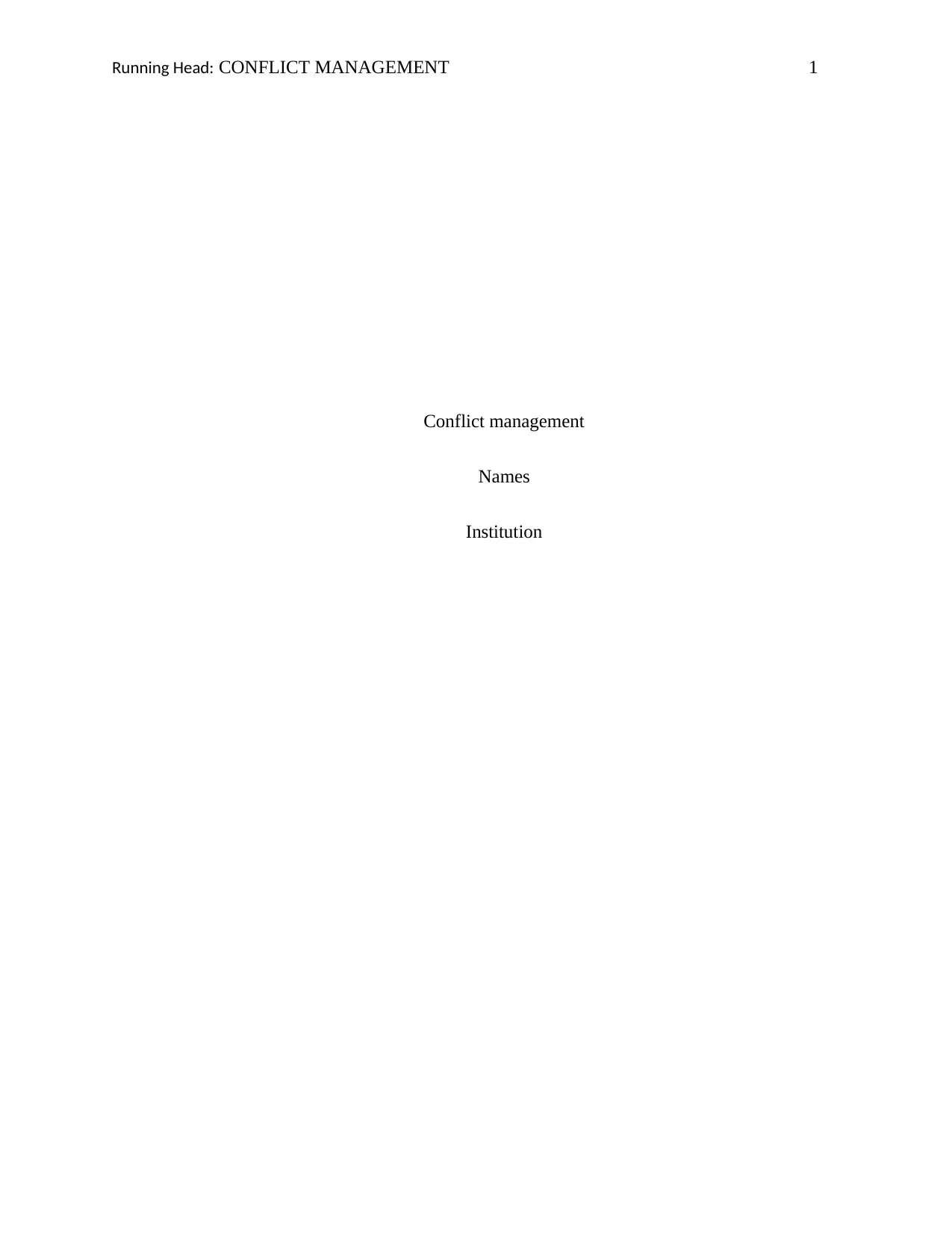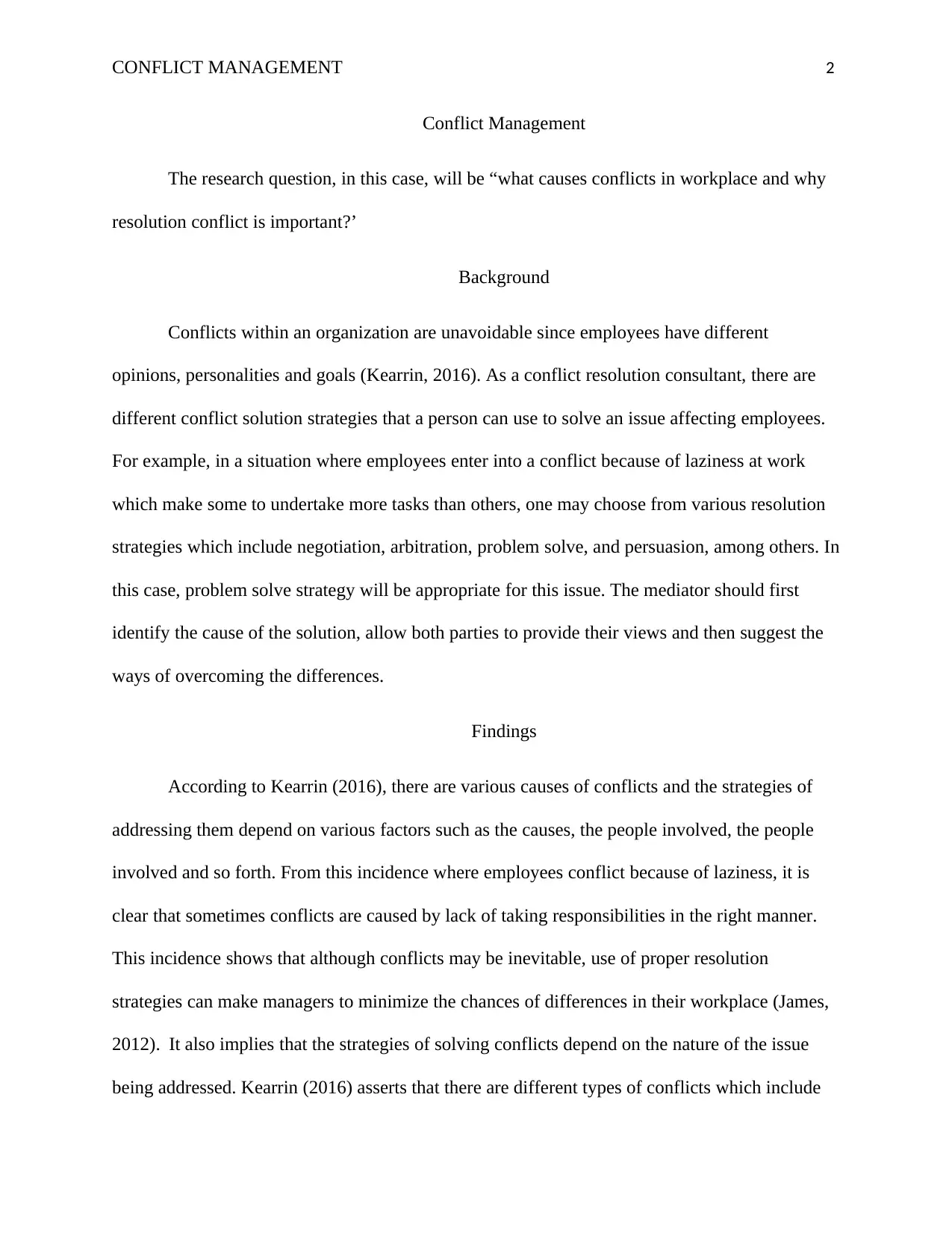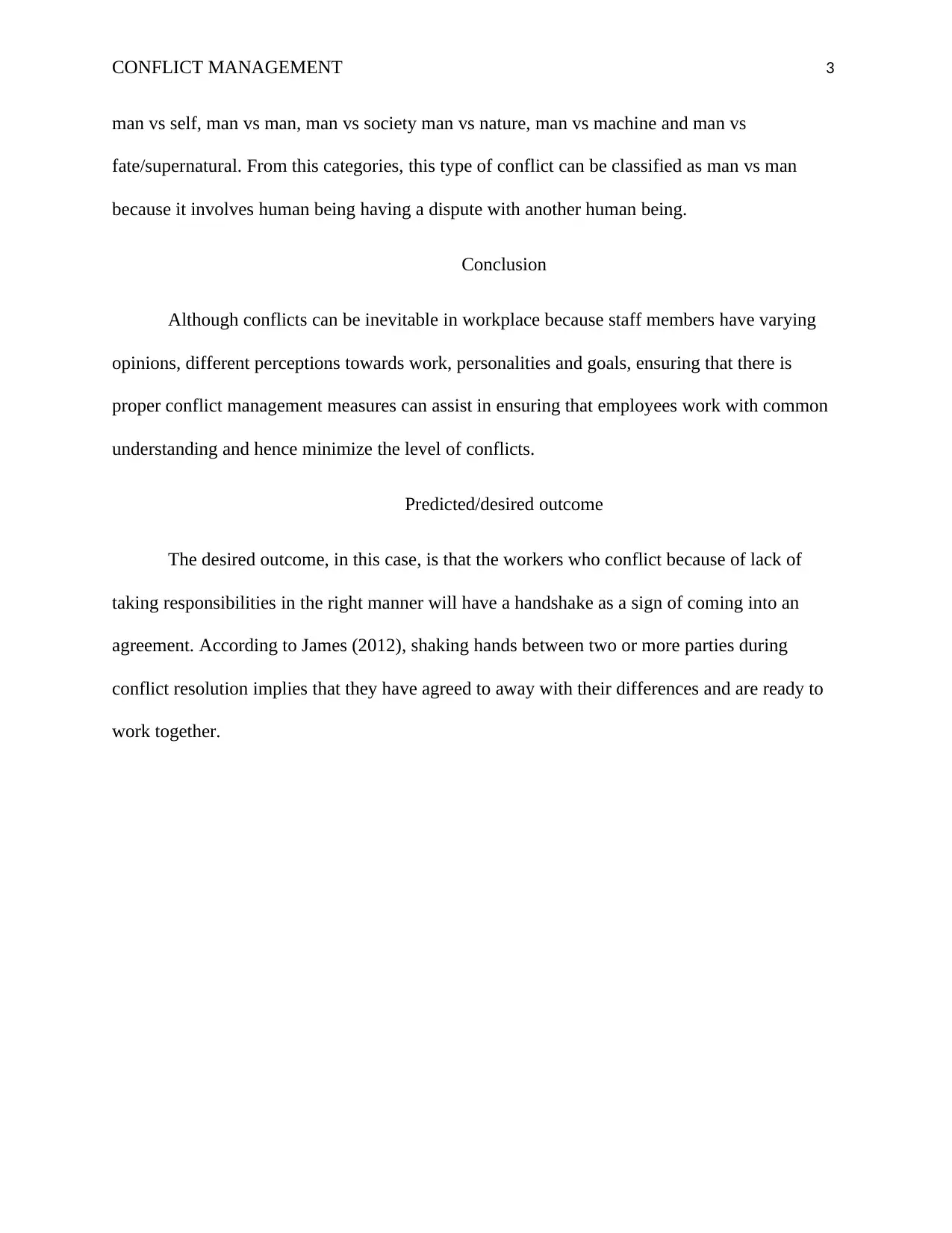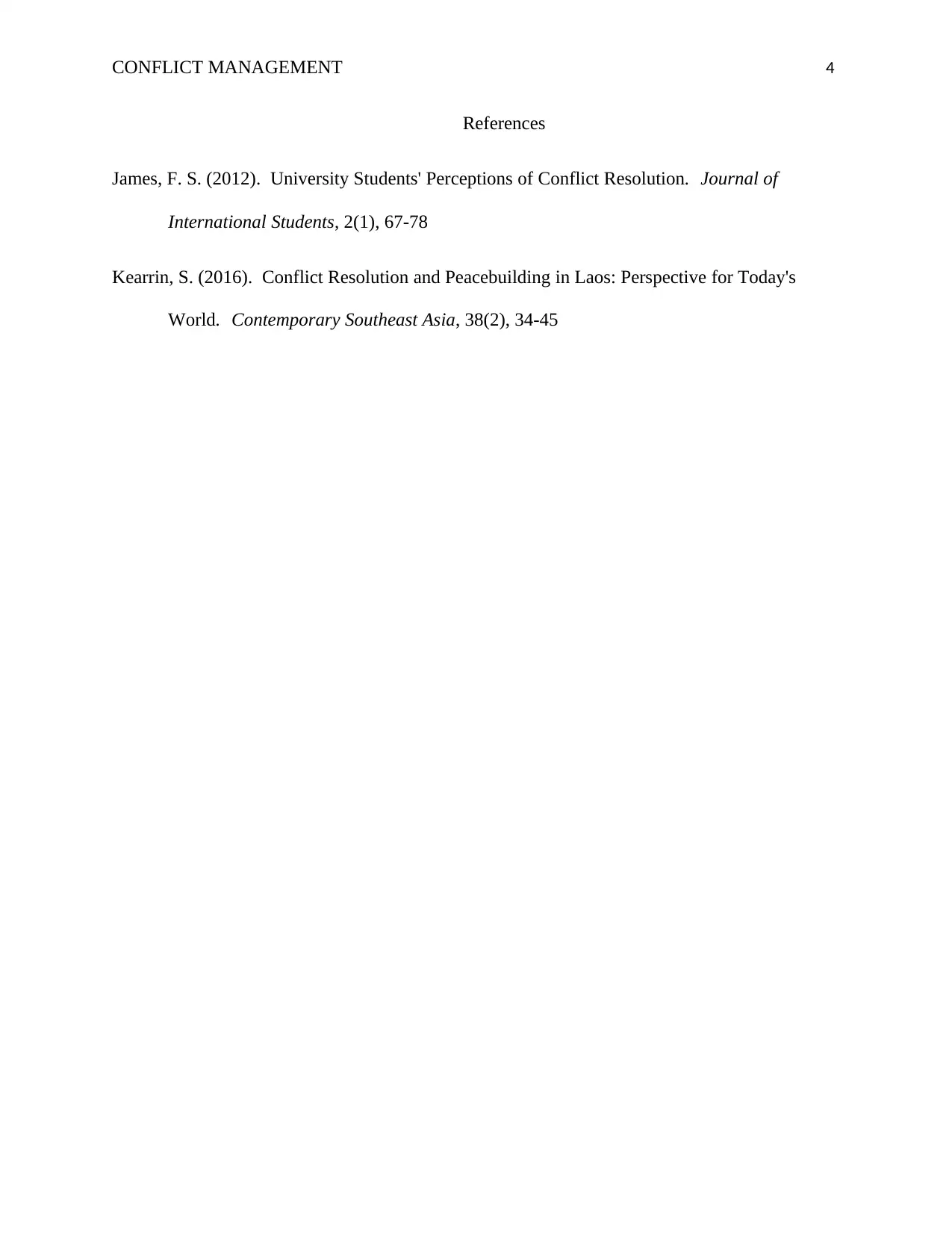Analyzing Workplace Conflict: Causes and Resolution Importance
VerifiedAdded on 2023/06/04
|4
|547
|287
Essay
AI Summary
This essay addresses the research question of what causes conflicts in the workplace and why conflict resolution is important. It highlights that conflicts are unavoidable due to differing opinions, personalities, and goals among employees. Using the scenario of conflict arising from laziness at work, the essay suggests problem-solving as an appropriate resolution strategy, emphasizing the importance of identifying the root cause and allowing both parties to express their views. The essay references Kearrin (2016) to categorize conflicts and James (2012) to support the idea that proper resolution strategies can minimize workplace differences. It concludes that while conflicts are inevitable, effective conflict management ensures employees work with a common understanding, thereby reducing conflict levels and leading to desired outcomes such as agreement and collaboration, symbolized by a handshake.
1 out of 4











![[object Object]](/_next/static/media/star-bottom.7253800d.svg)